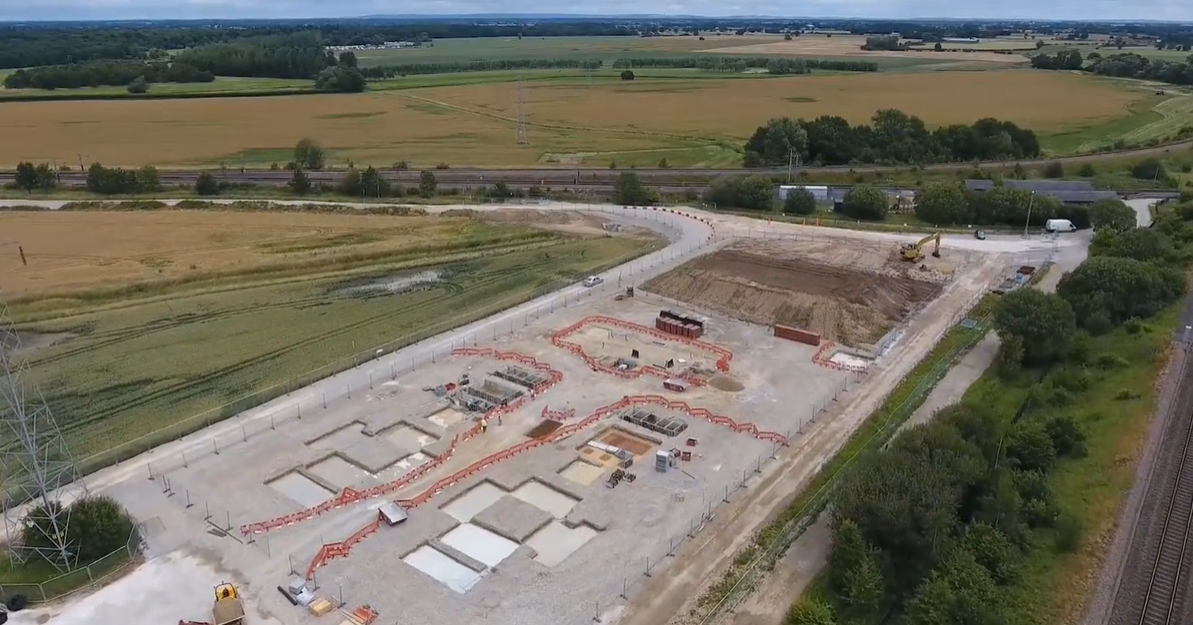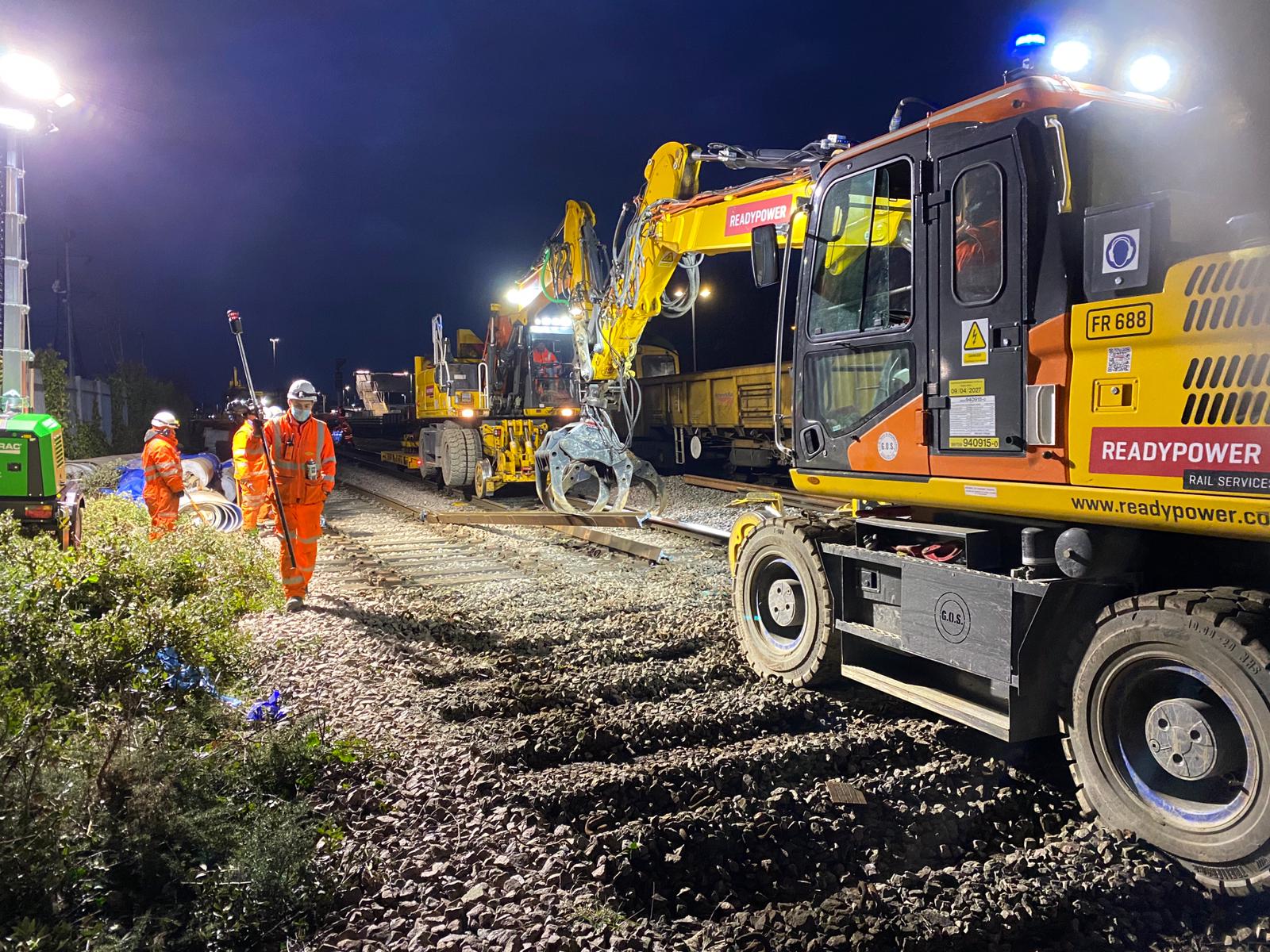We’re working hard to improve the way we work – and value for taxpayers. Here are seven ways we’ve made the railway more efficient …
We will deliver £4bn of efficiencies by pursuing better value and doing more for less by 2024. We have challenged ourselves to reduce our costs by 15% when building major projects.
1. Siding with freight
A £840,000 regeneration project resulted in a £6.7m investment from a new freight partner.
We constructed new sidings, lay-bys for trains, at Lowestoft that repurposed 3.4 acres of land and attracted a new rail freight partner, Land Recovery.
The new sidings were designed as a fit for purpose freight facility adjacent to Lowestoft Port, Suffolk. Our new facility will allow longer Colas Rail freight trains to operate and also make it easier to carry out maintenance.
This will reduce disruption, save taxpayers £75,000 a year and reduce carbon emissions by removing 9,000 lorries from the roads.
2. Going with the flow … bridge
We developed a striking and innovative footbridge that will improve safety, drastically cut construction costs and transform rail crossings.
Our curved, modular flow bridge, made of lightweight fibre-reinforced polymer (FRP), has been named to reflect its modern, flowing design.
The bridge cost considerably less than traditional steel structures to produce and install. It takes four days to install a flow bridge, reducing cost by 40%.
The adaptable, modular design means it is well suited to a variety of locations and its low cost will enable us to also replace existing bridges which might otherwise be temporarily fixed or refurbished.
3. A swing in surveying
We used drones to survey three swing bridges at Reedham, Somerleyton and Oulton Broad, East Anglia.
The drone surveys helped identify upgrades and repairs that will save £2.5m in future maintenance costs and saved several months of time if we were to traditional survey the bridges.
Our teams will replace the winch systems, hydraulic jacks and pipework, lighting will installing new power systems. This will prevent future costs, reduce disruptions and improve railway and waterway efficiency in the area.
4. DIY SOS – our in-house design and delivery teams
We’re developing in-house teams to carry out our essential work to save millions of pounds spent on contractor assistance.
The new teams will cover the whole spectrum of civil engineering in the North West and Central region, including sea defences, culverts, bridges retaining walls and much more. We can deliver all of this inhouse.
We’ll reduce project costs by 53% – qual to a £10m a year – by designing and delivering more of our projects.
5. Saving on steel
We saved £4m by negotiating a better rate when purchasing steel and promising more work to our supplies.
Our teams were able to negotiate a better rate on steel before the price increased. We also promised more work to our steel fabricators that has provided a more stable work bank.
This has greatly reduced the price and will shorten the time taken to complete projects that require specialised steel elements.
One of our fabricators, Lundy Projects in Stockport, will make overhead line equipment (OLE) and piles – the steel foundations – for our projects in Scotland.
6. ‘Ec-static’ about power supply
We’re improving the power supply on the East Coast Main Line to enable faster, quieter and more environmentally friendly electric trains to run. It’s part of our big East Coast Upgrade.
We’ll use innovative tech called static frequency convertors instead of traditional methods to run these green trains – and save more than £500m throughout the course of the project.
Our static frequency convertors will sit separately from the railway and plug in to existing power cables. This means there’s been no need to set up a whole new power supply and close the railway to install it.
The convertors will take the local electricity supply and amplify, clean and optimise it. They will do this without disturbing the local power supply.
This project will save £0.5bn by retiring the diesel fleet of trains. It will also save about 154 tonnes of carbon a day – that’s the equivalent of planting over 2,300 trees every day.
7. Electricity-resistant paint?
We avoided a £40m bridge demolishment in Cardiff, Wales, by use a new electric resistant paint.
Our teams used electric resistant paint and voltage-controlled clearance (VCC) to make a Victorian railway bridge usable by new electric trains.
This world’s first avoided having to close the railway for weeks, passenger disruption and train delays.
You can now enjoy cleaner, greener and faster trains between London Paddington and Cardiff, thanks to the completion of electrification on this route in 2020.
Read more:
- Efficient and dependable partner
- Rail freight
- Innovative ‘flow’ footbridge
- Swing bridge upgrades will deliver more reliable journeys for passengers in East Anglia
- North West & Central region
- Our Delivery Plan for 2019-2024
- Supply chain
- Piling
- Overhead line equipment – Network Rail
- Scotland’s Railway – Network Rail
- Power supply upgrade – Network Rail
- East Coast route – Network Rail
- Cardiff bridge avoids £40m demolition thanks to electric resistant paint
- Electrification – Network Rail
- London Paddington – Facilities, Shops and Parking Information (networkrail.co.uk)




